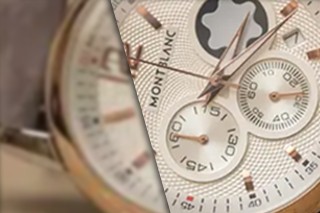The article provides a comprehensive guide to the best 3D printer pens available in the market. Each pen is reviewed based on its features, user-friendliness, output quality, and suitability for various purposes, making it a useful resource for anyone interested in exploring the world of 3D printing.
Make three-dimensional art the simple way! These are the most excellent 3D pens for both adults and kids.
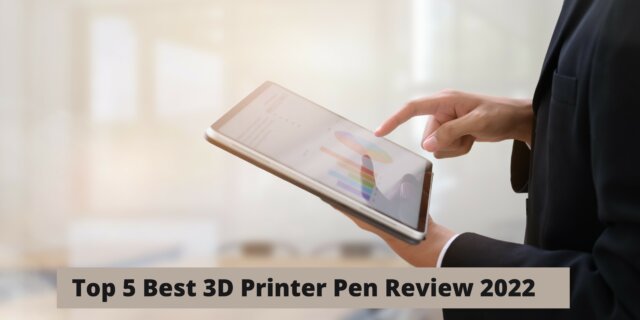
Are you someone who enjoys creating art or making things with your hands? Do you ever wish you could take your designs to the next level and make them three-dimensional? If so, you might be interested in 3D printing technology, but investing in a full-sized 3D printer can be expensive and complex. So, what's the solution?
Enter 3D pens - handheld devices that allow you to create 3D objects using heated plastic filaments. These pens are versatile, user-friendly, and affordable, making them an excellent option if you want to experiment with 3D printing without the commitment of buying a larger printer. You can 'draw' in three dimensions using the most excellent 3D pens and create a magnificent physical art piece.
Here we make a list of some of the best 3D printer pens available now.
What are 3D Pens and are They Really Work?
3D printer pens function similarly to glue guns. When you press a button, they release a form of liquid plastic, such as ABS or PLA, which swiftly cools in the air and solidifies. One approach to using them to make art is drawing a model from scratch. Another option is to decorate an existing model or object. You might also design a sequence of platforms and then link them together to get 3D ones.
A 3D pen employs the same heating element as a 3D printer to melt filament. However, unlike the latter, which is controlled by software, a 3D pen is owned wholly by you, much like a glue gun, allowing you to be genuinely expressive. When the filament exits the filter, it cools quickly and solidifies into the shape you've created.
If you want to make a 3D model by hand, 3D pens are a great option. However, if you're going to make a 3D model from an existing design, you'll need a 3D printer.
Top 5 Best 3D Printer Pen (Updated April 2024)
| 3D Printer Pen | Safety Features | Filament Type | Nozzle Size | Heating Time | Ease of Use |
|---|---|---|---|---|---|
| SCRIB3D P1 3D Printing Pen with Display | ✔️ | PLA, ABS | 0.7mm | 1 min | ✔️ |
| MYNT3D Super 3D Pen | ✔️ | ABS, PLA | 0.7mm | <1 min | ✔️ |
| 3Doodler Create+ 3D Printing Pen for Teens… | ✔️ | ABS, PLA | 0.5mm, 1mm | 1 min | ❌ |
| 3Doodler Start+ Essentials (2023) | ✔️ | Eco-Plastic | 2mm | <1 min | ❌ |
| MYNT3D Professional Printing 3D Pen | ✔️ | ABS, PLA | 0.4mm-1.75mm | <1 min | ✔️ |
1. SCRIB3D P1 3D Printing Pen with Display
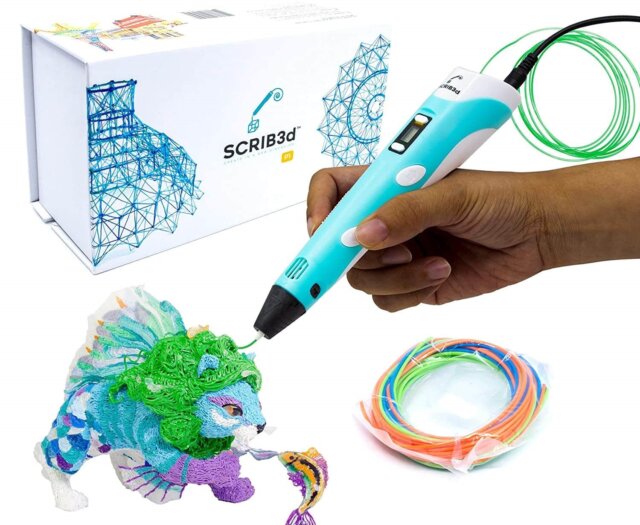
The Scrib3D P1 looks to have a positive user rating. But what's even better is that it's a low-cost 3D pen. And, because a 3D pen is unlikely to last very long, it's a smart pick for someone who wants to try one out without spending too much money.
This pen can work with both PLA and ABS. However, you might wish to avoid the unpleasant side effects of ABS fumes by sticking to PLA. It accepts any 1.75 mm filament. However, Scrib3D sells its own, which should save you money because costlier 3D pens (like the 3Doodler Create+) will only take their proprietary filaments, which may be expensive.
Pros
- It warms up rapidly and maintains a consistent temperature.
- It is capable of extruding filament (not well, but it does work)
Cons
- It seems CHEAP - The controls aren't constant or reliable
- The flow control is essentially useless (basically too much flow or way too much flow)
- It keeps extruding until you turn it off or remove the filament. (It appears to have some retraction built into it.) However, if such is the case, it is useless.)
2. MYNT3D Super 3D Pen
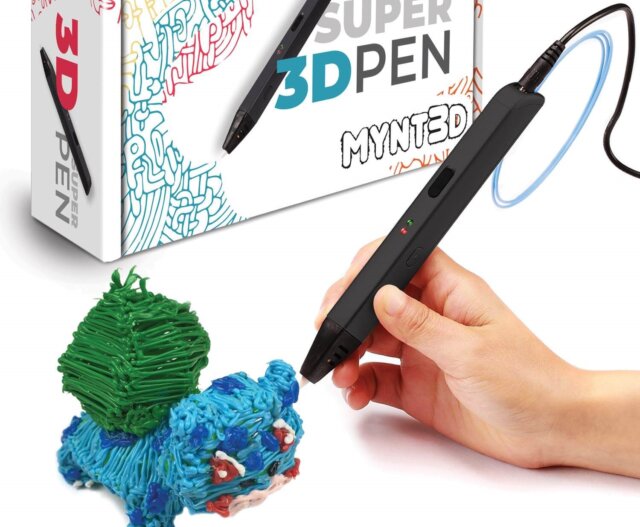
Then consider the MYNT3D Super 3D Pen, which is a fantastic bargain. It shares the same gearbox and interchangeable nozzle design as the Pro model (number one on our list). Despite this, it was significantly less expensive at the time of publication.
Of course, there's a reason behind this. The OLED display and temperature adjustment are not available here. A temperature adjustment screw, on the other hand, allows you to move between the correct temperatures for ABS and PLA, but you're confined to those two materials.
Pros
- Steeples speed slider
- Anti-clog, replacement nozzle
- Great value
Cons
- There is no display.
3. 3Doodler Create+ 3D Printing Pen for Teens, Adults & Creators
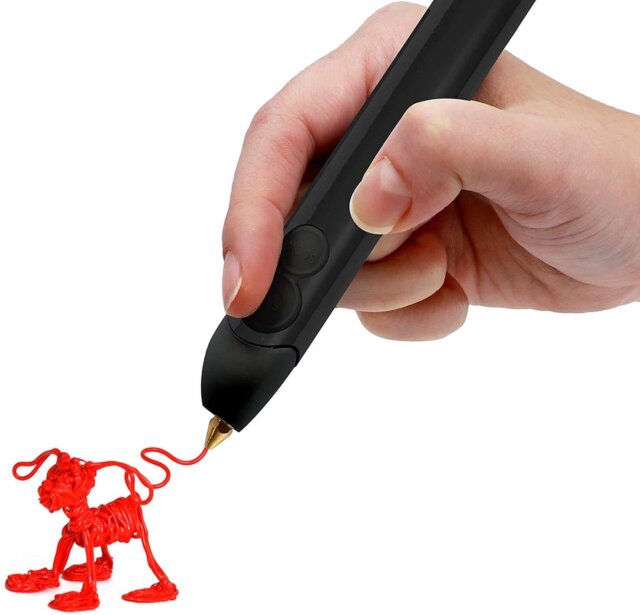
Have you ever used a 3D pen before? Then we'd recommend the 3Doodler Create+ since it's simple to use and easy to grip. However, you also have speed and temperature options, so experienced 3D pen users will find a lot to appreciate here.
Materials include FLEXY polymers, PLA, and ABS. However, you are limited to 3Doodler's proprietary ones. This kit consists of 75 filaments as well as a comprehensive handbook. Overall, this is a dependable 3D pen that provides decent value for novices.
Pros
- FLEXY filament compatible
- EASY TO USE
Cons
- There is no screen.
- 3Only Doodler strands
4. 3Doodler Start+ Essentials (2023)
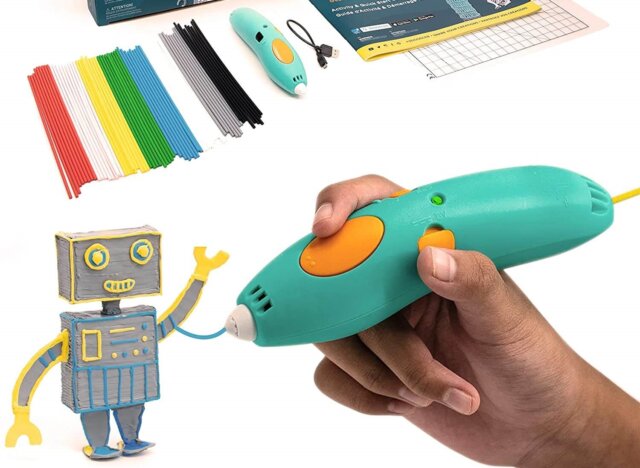
The 3Doodler Essentials (2021) Start+ is unquestionably the most excellent 3D pen for kids.
It is constructed with no hot parts to adhere to high safety regulations, so the pen nozzle and plastic can be handled without risk of burning. This makes it a safe choice for children aged six and up.
Pros
- Ideal for STEM study
- creative projects for children
Cons
- There is no screen.
- Only 3Doodler strands
5. MYNT3D Professional Printing 3D Pen
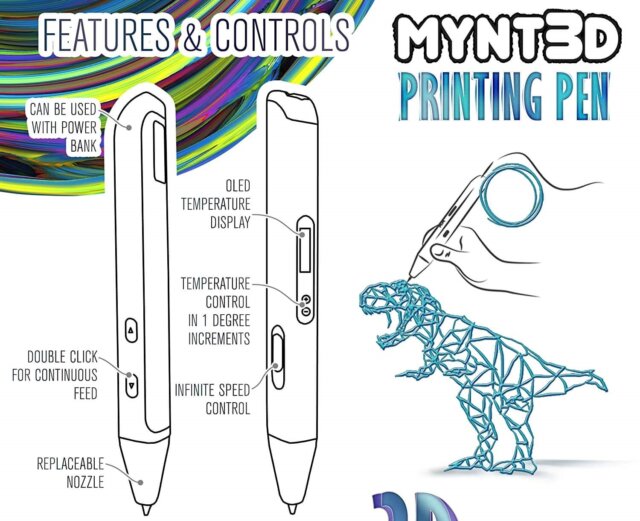
The MYNT3D Pro is the most excellent 3D pen for beginners and pros alike. Light and ergonomically constructed, it's suitable for novices.
The pen's modular nozzle makes errors easier to fix. 3D pen users will like its speed, temperature controls, and beautiful OLED display.
Pros
- Compatible with a broad range of filaments
- Stepless speed adjustment
- USB powered
Cons
- It-Maybe too much for a novice.
Although the 3D pens above can draw 3D objects, they can't draw 2D sketches. If you want some sketches before using a 3D pen, you can draw a sketch with your hands or find a sketch maker in our photo to sketch converter review.
How to Use 3D Printer Pen?
There are several sorts of 3D printing pens to pick from. The majority of them have the same basic design. However, their characteristics differ slightly. When choosing a pen, think about questions like "What filaments can it use?" "Can the temperature and speed settings be adjusted?" and "What accessories are available?" Here's a shortened recap of some of the most popular steps to using 3D printer pens.
Step 1: My 3D Pen, What's Included
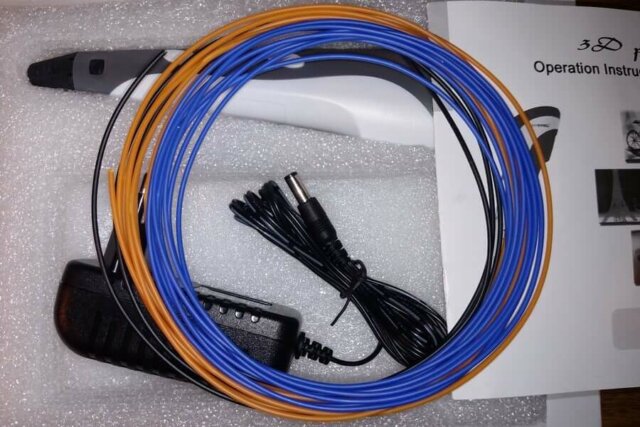
In this instructable guide, I will demonstrate how to utilize my 3D pen, which was given by GearBest.com and can be found here. This is a low-cost version of a 3D pen. You may have your 3D capability for less than USD 50. My pen comes with a few accessories...
- A 3D pen (obviously)
- three filament color samples
- 12VDC 3A Power Supply
- Operation Instructions (which, as a male, I ignored)
- AC adapter from Europe to the United States; the power supply arrived with those strange overseas prongs.
Step 2: Pen Operation
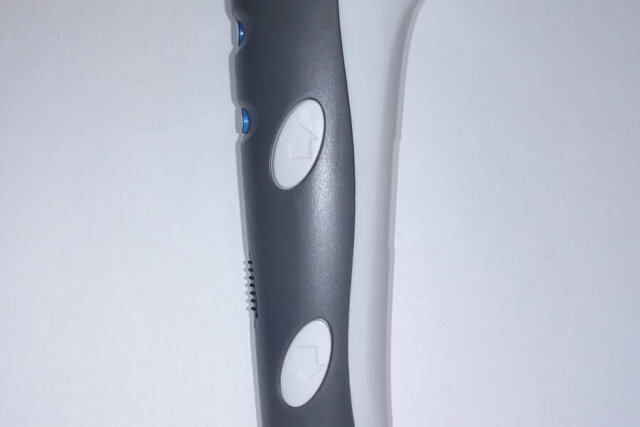
The pen is a little more 'complex' than I had anticipated. I assumed it would just have one go button. It features a forward and backward button, a speed control, and two LED status indicators, as it turns out. The tip is also detachable, so I imagine you can buy other size tips to improve your precision! I labeled the various components in the images.
Step 3: Adding Filament
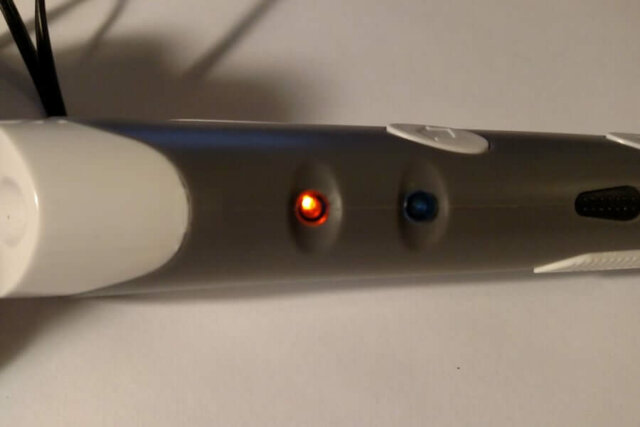
To add filament to your 3D pen is easy, but you may miss a simple step.
- When you power your 3D pen, you'll see an ORANGE light. I assumed it was warming up, but I was wrong. When the ORANGE LED lights up, push the forward/extrude button. This causes the pen's status LED to become RED, indicating it's warming up. When the cell is heated, the LED turns green.
- To add filament, gently feed it into the top entrance; the motor is near the opening. Once the filament is hard to push, use the forward/extrude button to pull it in. Full speed is when the speed control is near the filament and power connector. If you print slowly, the filament may never reach the heated tip.
- When the filament reaches the tip, you'll hear the motor and see it leaking. Print now! I extrude some more plastic to remove any leftovers at the start of a new color. You may now print faster and polish your artwork.
Step 4: Changing Filament

When you first start making items, you'll undoubtedly want to experiment with different colors. You must first erase the color you were previously using to do so. The processes are nearly identical to inserting the filament.
- Provide power
- Push the forward/extrusion button.
- Hold your breath and wait for the status light to turn green.
- Now, instead of pushing the extrude/forward button, click the reverse button, and the filament will begin to detract from the pen.
You may now load a new color filament or put your pen in a bag and carry it anywhere with you!
Step 5: Final Thoughts
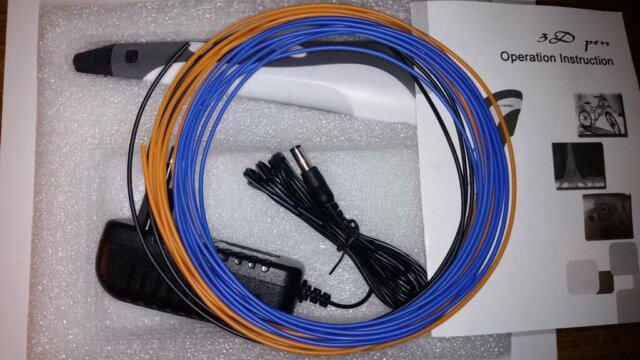
Overall, I thought this was a cute little toy. I would not use this to replace a 3D printer, but it may be great for touch-ups on 3D prints and is entertaining to play with. When I initially acquired it, one of my friends came over, and we had a great time playing with it.
I hope you enjoyed my little Instruct able. I'm considering putting a tiny battery pack on this device to make it more portable. I might put it together in a quick Instructable if I do that.
Conclusion
MYNT3D is the most excellent 3D printer pen under $100. Comfortable and easy to use, it boosted freedom and enjoyment. The well-designed MYNT3D Printing Pen creates clean, accurate 3D models. It outperforms the more popular and pricey 3Doodler Create, costing $30 more.
Serious hobbyists may forgive 3Doodler Cerate's design flaws for higher-quality materials, construction, and filament selection. Until recently, companies mass-produced molded plastic components without personalization. 3D printers let consumers make plastic. Creative people who use this media will usher in a new age. 3D pens may be predecessors to more powerful portable 3D tools, but they're creative toys for now.
FAQs
What is the purpose of a 3D pen?
A 3D pen may be used to draw on any flat surface. However, as the name implies, the true beauty of a 3D pen is that it allows you to sketch in mid-air with plastic filament and build three-dimensional objects that eventually solidify. You may also draw over an existing item to improve it.
Which 3D pen should I get?
The MYNT3D 3D Pen Pro is the most excellent 3D pen available today (opens in a new tab). It's lightweight and ergonomically constructed, making it simple to grip and use, whether a novice or a seasoned pro. You may increase the temperature in stages with an adjustable feed, which lets you stay in control. It is USB powered and works with a variety of filaments.



